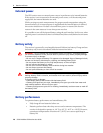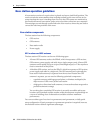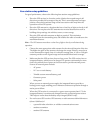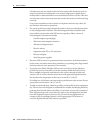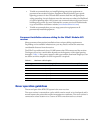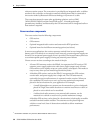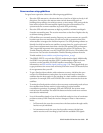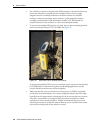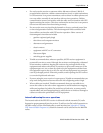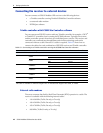
SPSx51 Modular GPS Receivers User Guide 35
Setup Guidelines 4
• Trimble recommends that you install lightning protection equipment at
permanent base station locations. Equipment should include a gas capsule
lightning protector in the GPS and radio antenna feed line and appropriate
safety grounding. A static dissipater near the antennas can reduce the likelihood
of a direct lightning strike. Also protect any communications and power lines at
building entry points. For more information, contact your local Trimble dealer,
or go to the Huber and Suhner website (www.hubersuhnerinc.com).
• Trimble recommends that you use surge protection equipment on all
permanently installed equipment.
Permanent installation antenna cabling for the SPSx51 Modular GPS
receiver
Many permanent base station installations have unique cabling requirements.
Depending on the available infrastructure, you may need to mount the antenna a
considerable distance from the receiver.
The SPSx51 can withstand a loss of 12 dB between the GPS antenna and the receiver.
The degree of loss in a coaxial cable depends on the frequency of the signal passing
through it. Ta ble 4. 1 lists some common cable types and the maximum length you can
use before an inline amplifier for GPS frequencies is required.
Rover operation guidelines
The second part of the RTK GPS system is the rover receiver.
The rover receiver is mounted on a pole, vehicle, marine vessel, or in a backpack, and is
moved between the points that require measurement or stakeout. The rover receiver is
connected to a base station or to a source of RTK corrections such as a virtual
Table 4.1 Maximum cable lengths
Cable type Maximum length (for use without an inline amplifier)
RG-214 30 m (100 ft)
LMR-400 70 m (230 ft)
LMR-500 85 m (280 ft)
LMR-600 106 m (350 ft)
Heliax LDF4/50 165 m (540 ft)
Heliax LDF4.5/40 225 m (740 ft)




